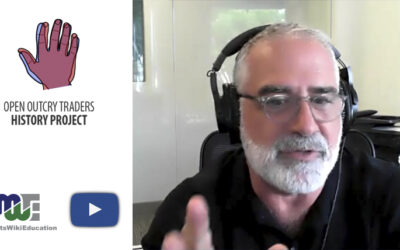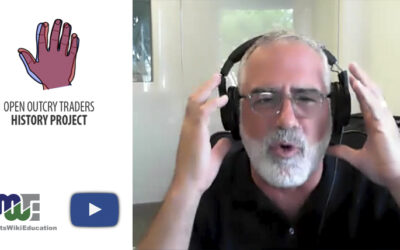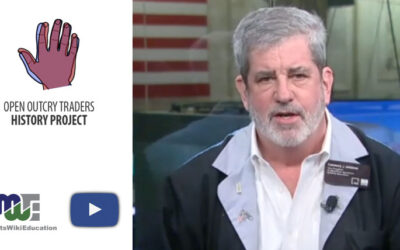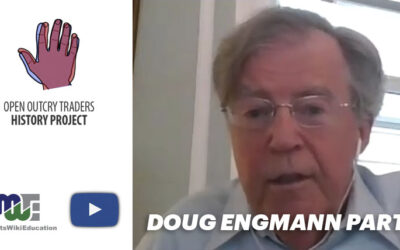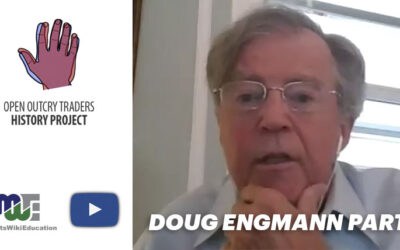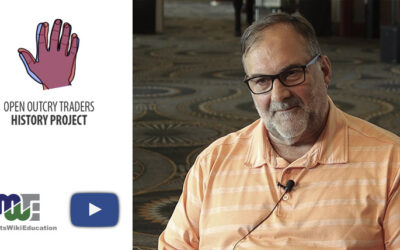WILLIAMS SPOKE TO JOHN LOTHIAN NEWS FOR THE OPEN OUTCRY TRADERS HISTORY PROJECT
Bruce Williams was a South Side Chicago street smart kid who found his way to the markets through tennis. As a youth, Williams had dreams of being a professional tennis player, and it was through a local tennis professional who was also a trader at the Chicago Board of Trade that he was first exposed to the markets.
That pro was Ray Cahnman. Cahnman and a tennis-playing friend who had started trading at the Chicago Mercantile Exchange encouraged Williams to check out the markets.
Williams visited the Chicago Mercantile Exchange and viewed the markets from the visitors gallery. He was at first intimidated by the action of hand signals, jumping and shouting on the trading floor and told his friend best of luck, this was not for him. But more conversations over the next few months and a new contract at the Chicago Board of Trade, 10-Year Treasury futures, encouraged Williams to try it.
Williams did not come from a wealthy family. He had $2,000 and borrowed $1,000 from a successful exchange member he knew who wanted to back him. With that $3,000, he was able to start trading using a permit that allowed him to trade the new 10-Year Treasury futures at the CBOT. He was one of 100 such permit holders trading the 10-Year who were easy targets for the more experienced traders.
Williams said he had a better feel for the stock indexes than the 10-Year Treasury futures. After a couple of years in the 10-Year pit, he moved to the Major Market Index pit. He traded the MMI until the stock market crash of 1987, after which he started trading in the CBOT’s grain markets.
Williams traded through Cahnman’s firm, then called Aardvark Financial, Inc. and later TransMarket Group. Cahnman brought several other tennis players that Williams knew to the markets. Williams said he also always helped other young people to come into the markets.
He learned a lot about trading, the markets and how the exchange worked from Cahnman, as well as from big traders in the 30-year bond pits like Rob Moore and Lance Murdock.
Williams stayed away from the bad influences of traders who had too much time and money on their hands. He followed the style of traders he admired who he said he never saw in the bar in the lobby of the CBOT building.
The one thing he would change about his career is not having so many fish sandwiches at The Brokers Inn restaurant, saying he should have taken better care of himself over the years.
He considers himself lucky, having modeled his trading after some of the most successful traders on the floor. Using his street smarts and hard work, he was able to earn an income of seven figures a year, especially after he moved to the soybean pit.
Williams stopped trading because of electronic trading. He tried to delay the onset of electronic trading and extend the life of open outcry trading as much as he could, even though he was involved in the electrification of the trading floor while a member of the CBOT’s board of directors. He left in 2008 after electronic trading became the primary market in the grains, though he wishes he had stayed longer.
Not everyone on the trading floor was a nice guy. Some would try to hurt you, he said. Williams could not understand that concept, though he was a highly competitive trader. Being a South Side kid, he had the street smarts to know when he was being taken advantage of and when some traders seemed to have too much good luck.
He said only 3% to 5% of the pit traders really studied the markets and knew the technical and fundamental factors driving the markets. The rest were in the crowd that followed the herd, or faded it.
The economic opportunity in the markets in the 1980s and 1990s was unlimited, he said. As a medium-sized trader he made a quarter of a million dollars during the stock market crash of 1987. He talked about many of the famed traders of the CBOT who made millions of dollars trading, some before his time, but some during it.






